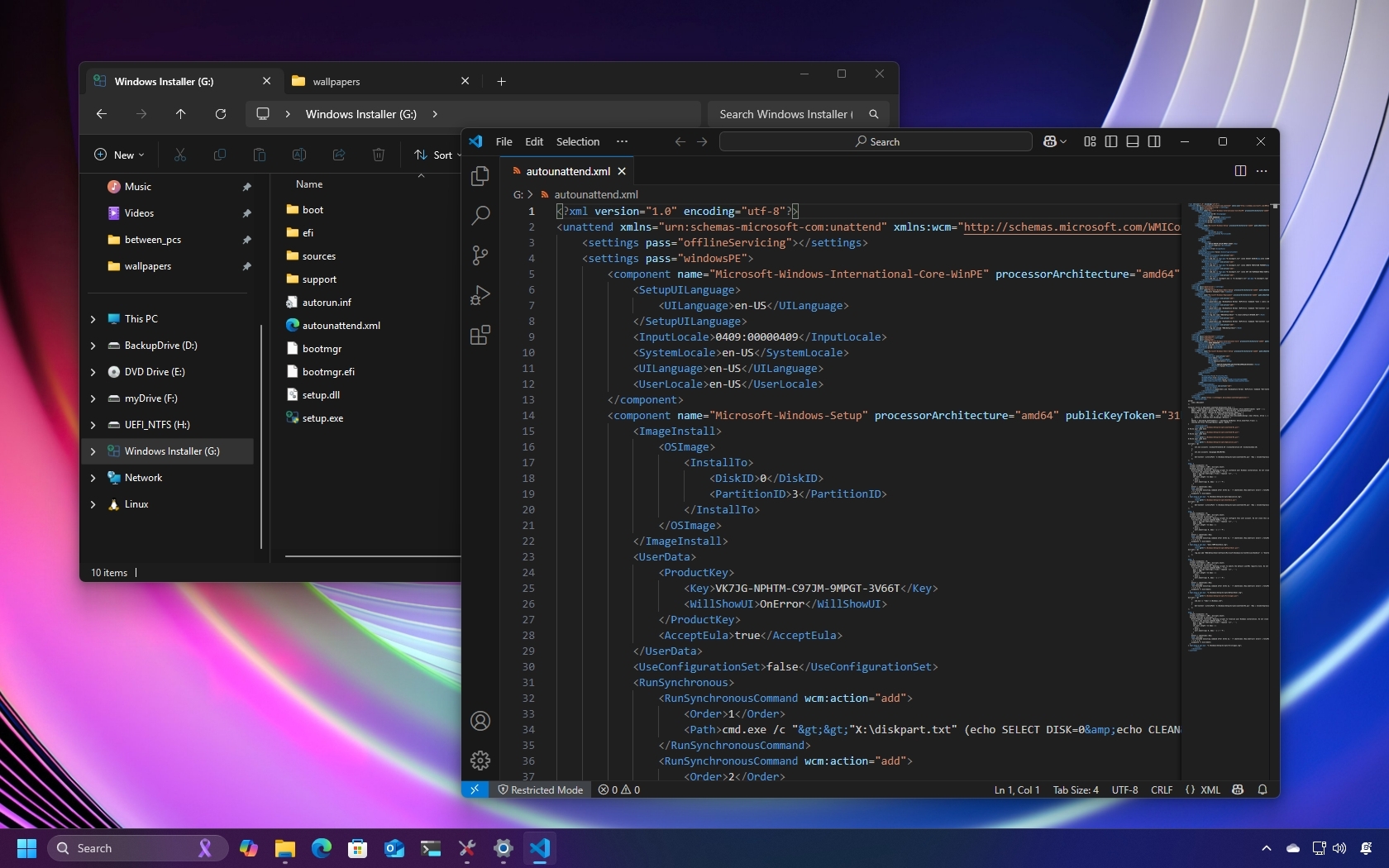
On Windows 11, you can set up an installation file (either autounattend.xml) to bypass the standard setup and Out-of-box Experience (OOBE) during installation. In this tutorial, I will walk you through the process.
To carry out a fresh install of Windows 11, you’ll usually need to go through the Windows Setup procedure that manages the installation details such as language options, product key, and disk arrangement. Furthermore, post-installation, you’ll be required to finish the Out-of-box Experience (OOBE) to customize settings like keyboard setup, account creation, and privacy settings.
Instead of manually managing the installation and addressing questions, consider creating an automation method by constructing an answer file detailing instructions for each on-screen prompt. This file can be incorporated into a bootable media so that during the setup process, Windows 11 can automatically retrieve and execute the answers, thus streamlining the installation without requiring your intervention.
In this tutorial, I’ll walk you through the process of making a setup file to install Windows 11 on your PC.
Create an answer file for an unattended install of Windows 11
Performing an unattended installation of Windows 11 isn’t difficult! Here’s a simplified approach:
1. First, you need to install the DISM (Deployment Image Servicing and Management) Tools application on your computer.
2. Next, use the user-friendly wizard provided with DISMTools to generate an unattended setup file.
3. Lastly, incorporate the generated “.xml” file into your Windows 11 bootable media before you initiate the installation process.
It’s worth mentioning that there are various options available for finishing this task, yet I personally prefer utilizing DISMTools as they provide a straightforward approach to generating the necessary file. Nevertheless, be aware that DISMTools is a third-party, non-Microsoft tool. So, employ it at your own discretion and potential risk.
Install DISMTools
To install DISMTools on Windows 11, use these steps:
- Open Start.
- Search for Command Prompt, right-click the top result, and choose the Run as administrator option.
- Type the following command to install the tool (preview) and press Enter: winget install CodingWondersSoftware.DISMTools.Preview
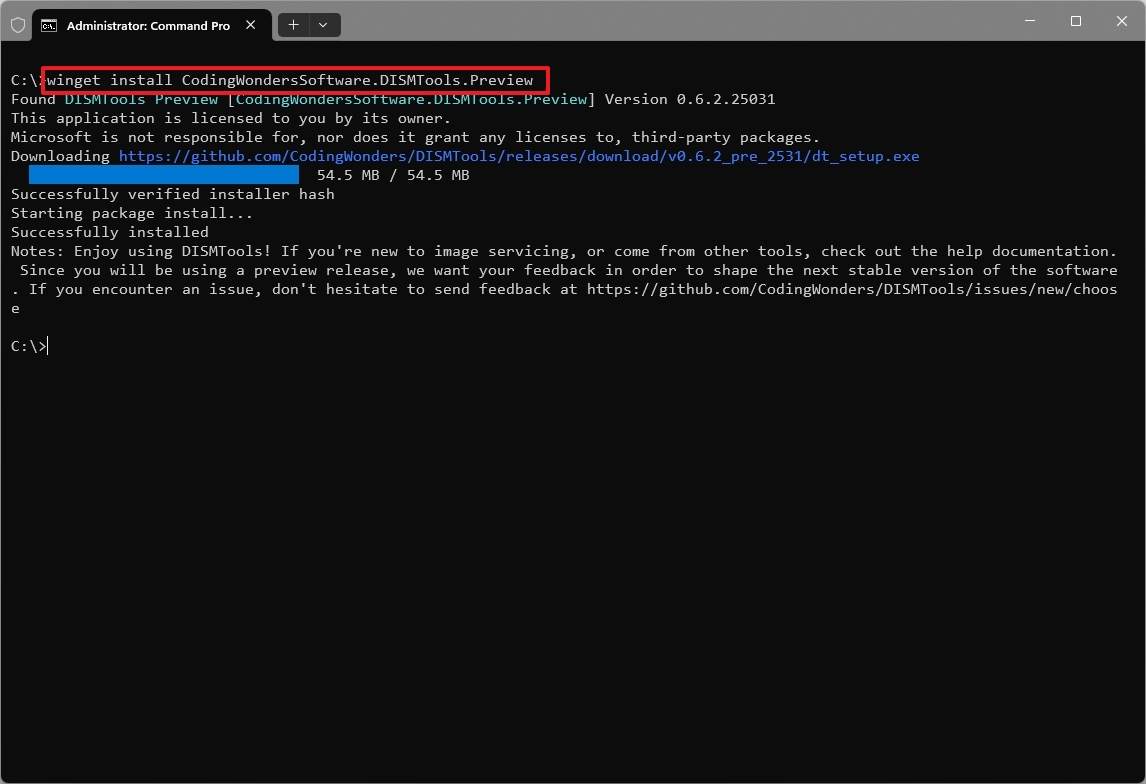
After following the provided instructions, you can leverage the tool’s guide to generate a setup file for performing an automated installation of Windows 11, eliminating repetitive steps.
Create answer file
To create an unattended file to install the operating system, use these steps:
- Open Start.
- Search for DISMTools and click the top result to open the app.
- Click the Next, Next, and Finish buttons to process the initial setup.
- Click on Tools and choose the “Unattended answer file creator” option.
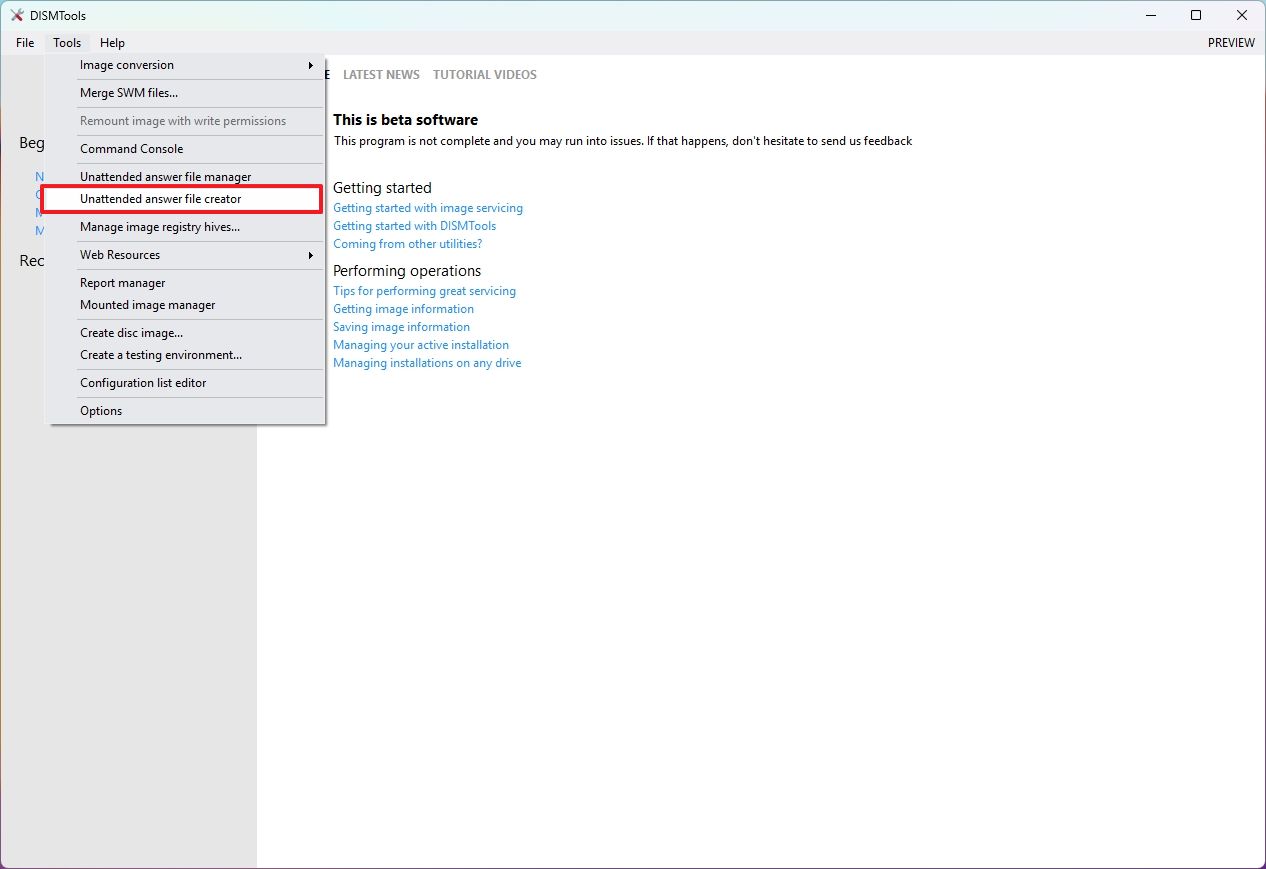
- Click the Yes button to download the .NET 9 Runtime (if applicable).
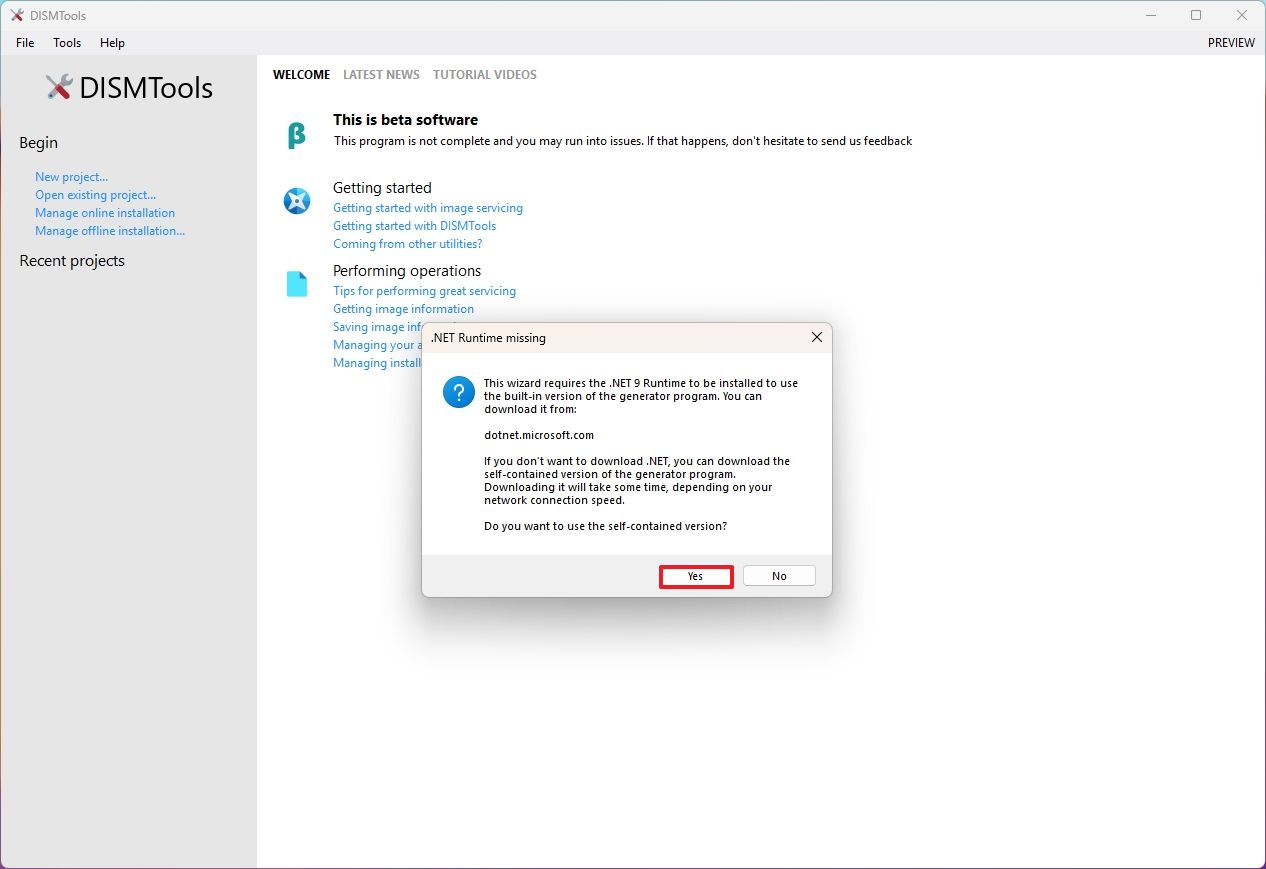
- Click the Next button to start the wizard.
- Select the “Configure these settings now” option.
- Choose the system language, locale, keyboard layout, and location.
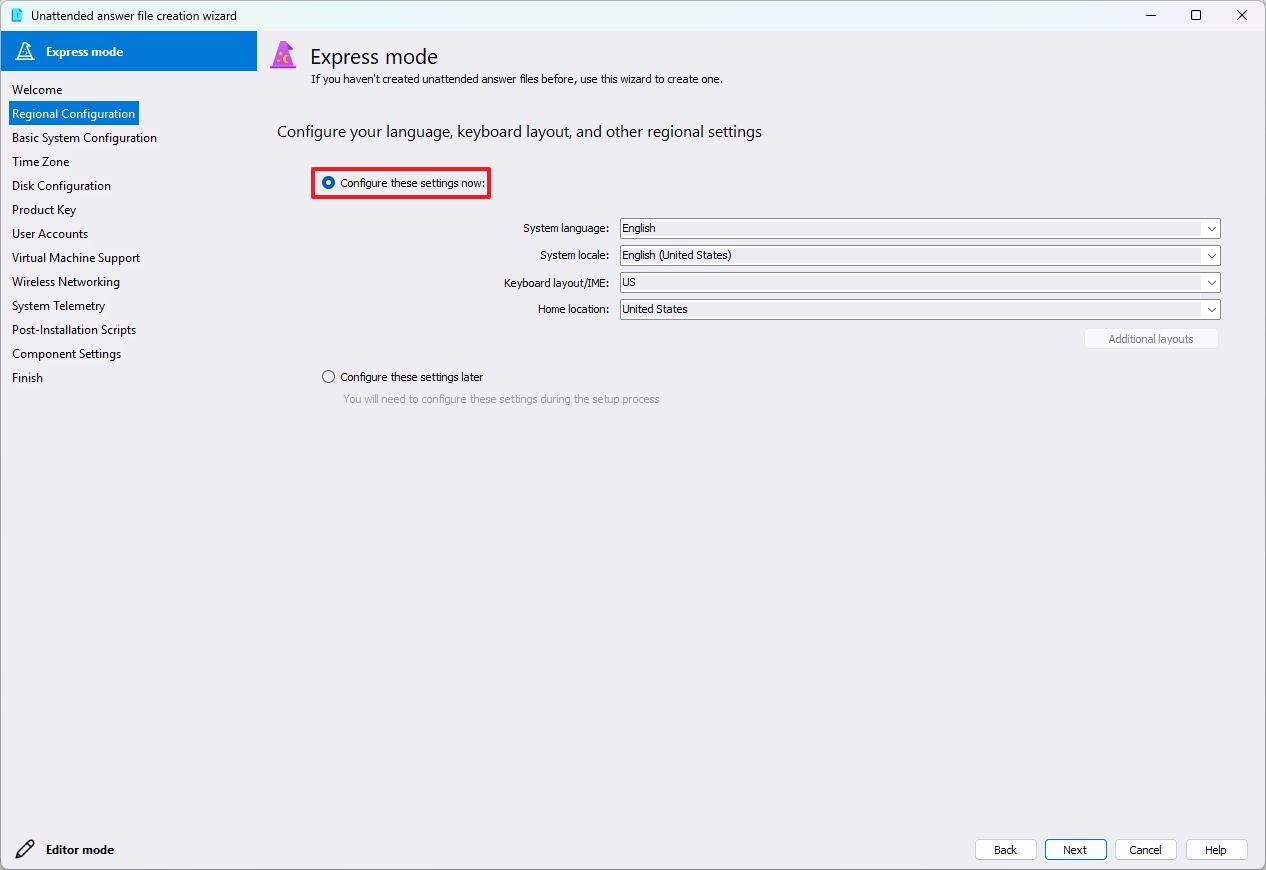
- Click the Next button.
- Choose the “x64” option for processor architecture, since that’s the only supported architecture for Windows 11.
- (Optional) Check the “Bypass System Requirements” option in the “Windows 11 settings” to create a file to install the operating system on unsupported hardware.
- (Optional) Check the “Bypass Network Connection” option in the “Windows 11 settings” to create a local account during the setup.
- Check the “Let Windows set a random computer name” option because if you’re using the same file on different devices, you will avoid conflicts with the same computer name.
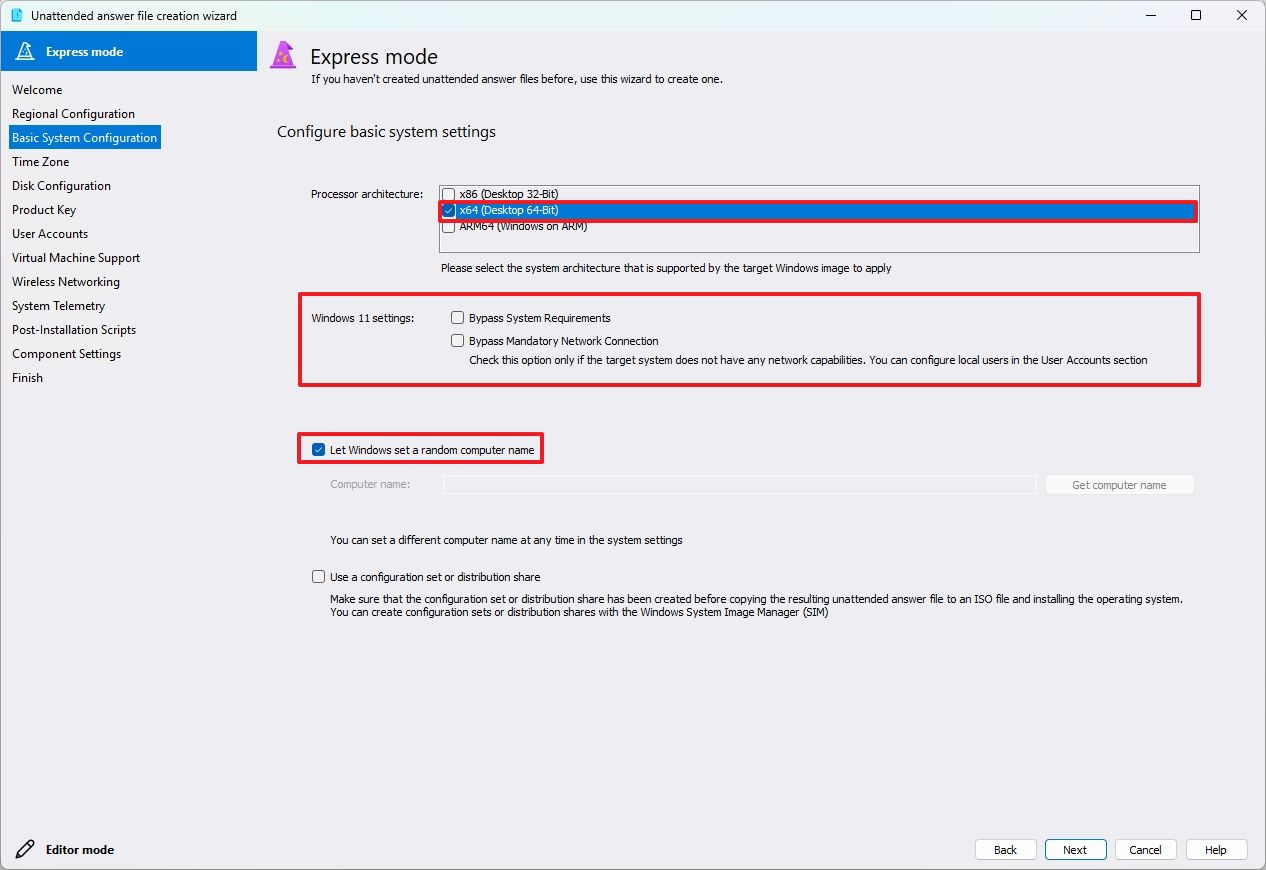
- Click the Next button.
- Choose the “Set a time zone manually” option.
- Select your current time zone.
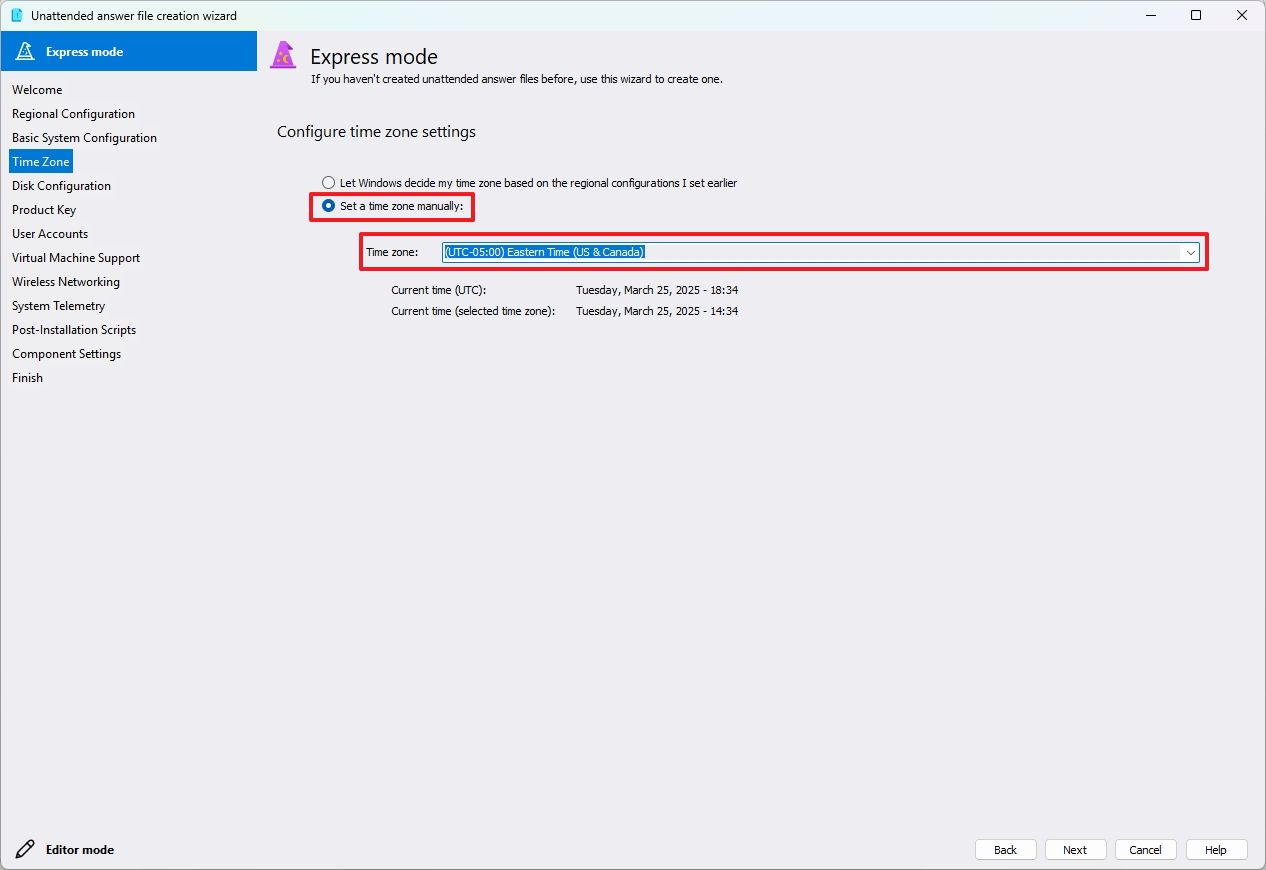
- Click the Next button.
- Clear the “I want to configure these settings during the installation” option to manually configure the EFI and Recovery Partition.
- Choose the “Configure settings for disk 0” option and use the default configuration.
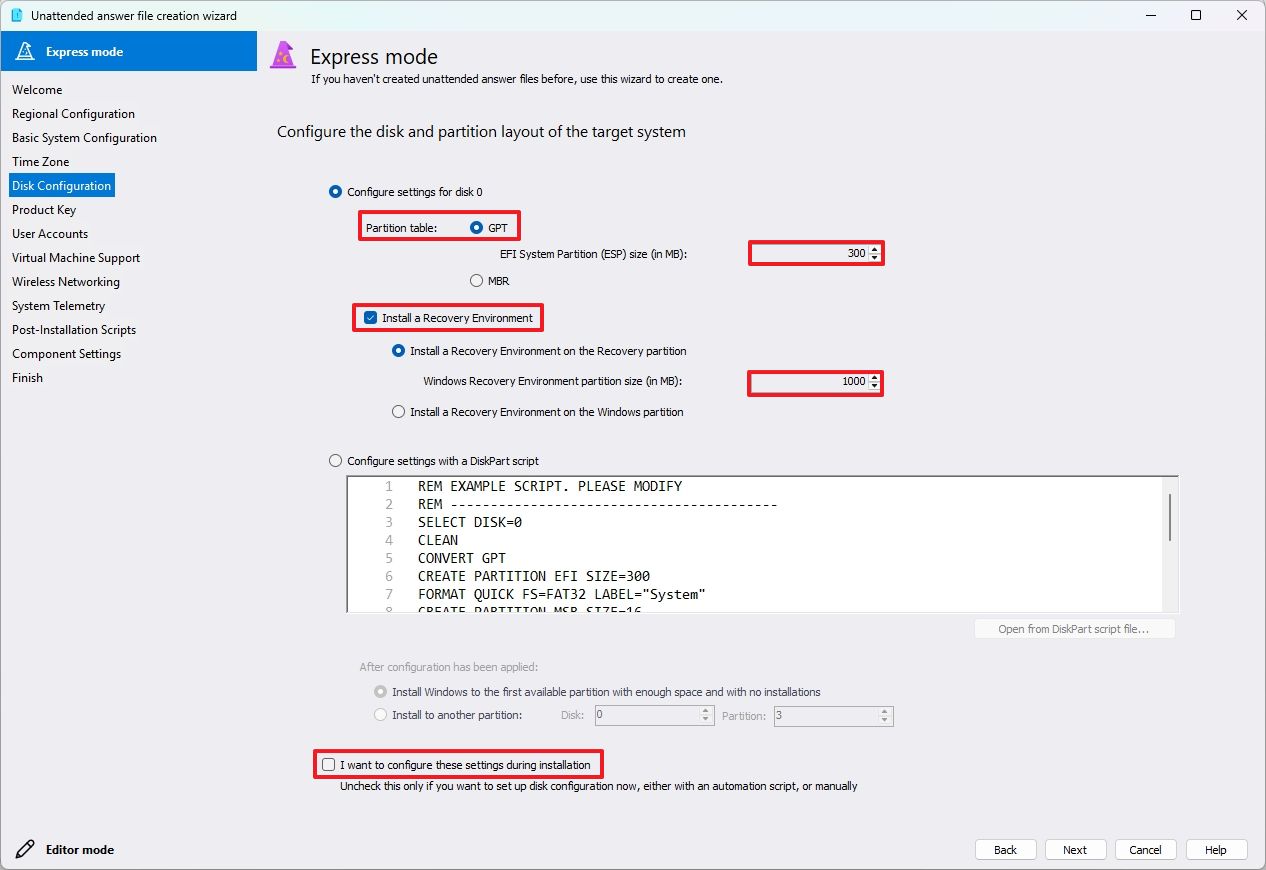
- Quick note: The default configuration will create a 300MB EFI partition using GPT and a 1GB Recovery Partition.
- Click the Next button.
- Choose the “Use a generic product key option to skip this” option.
- Select the product key for the edition of Windows 11.
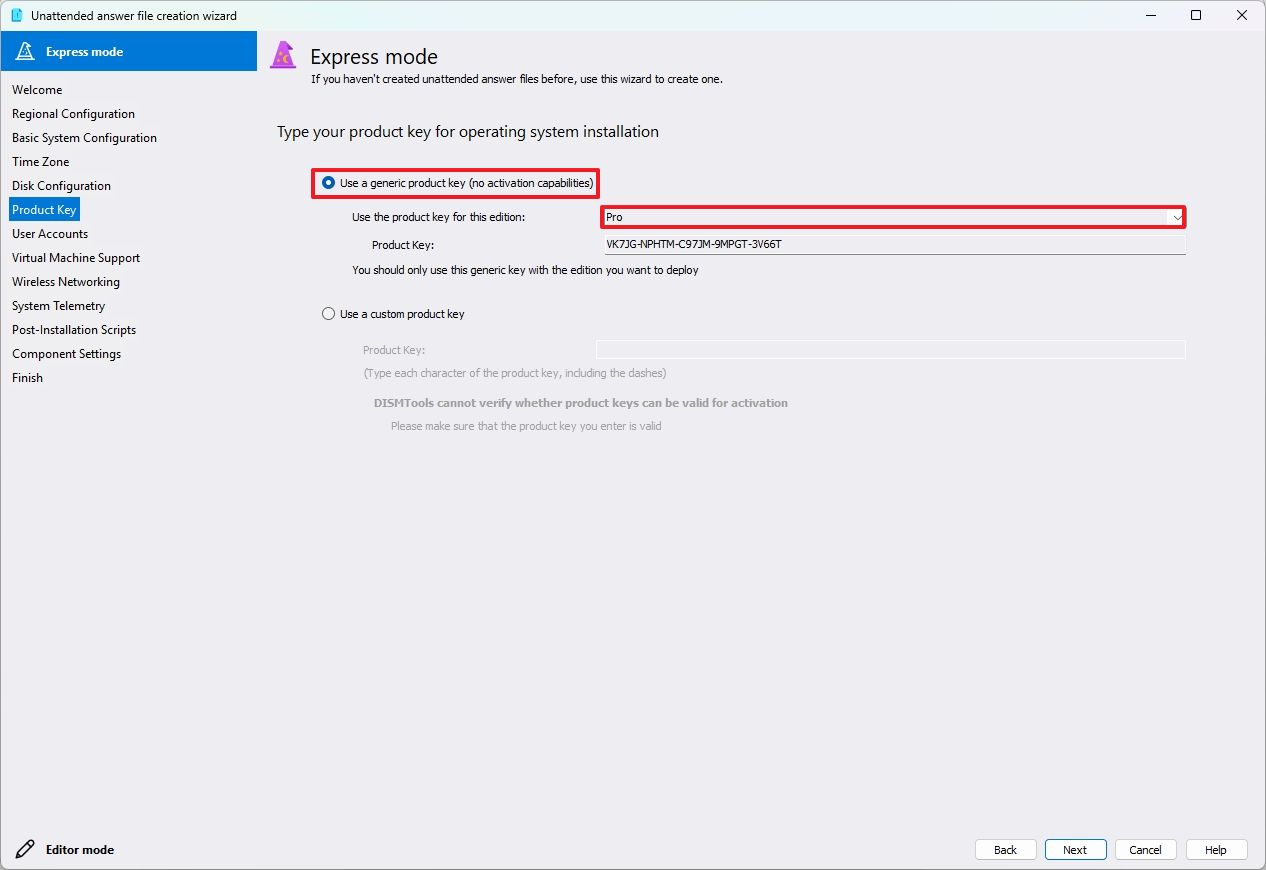
- Quick note: If you’re installing the operating system on a device that previously had Windows 10 or 11, the installation will reactivate automatically. Otherwise, you will have to activate the system after the installation.
- Click the Next button.
- Clear the “I want to configure these settings during installation” option.
- Confirm the local account name and password.
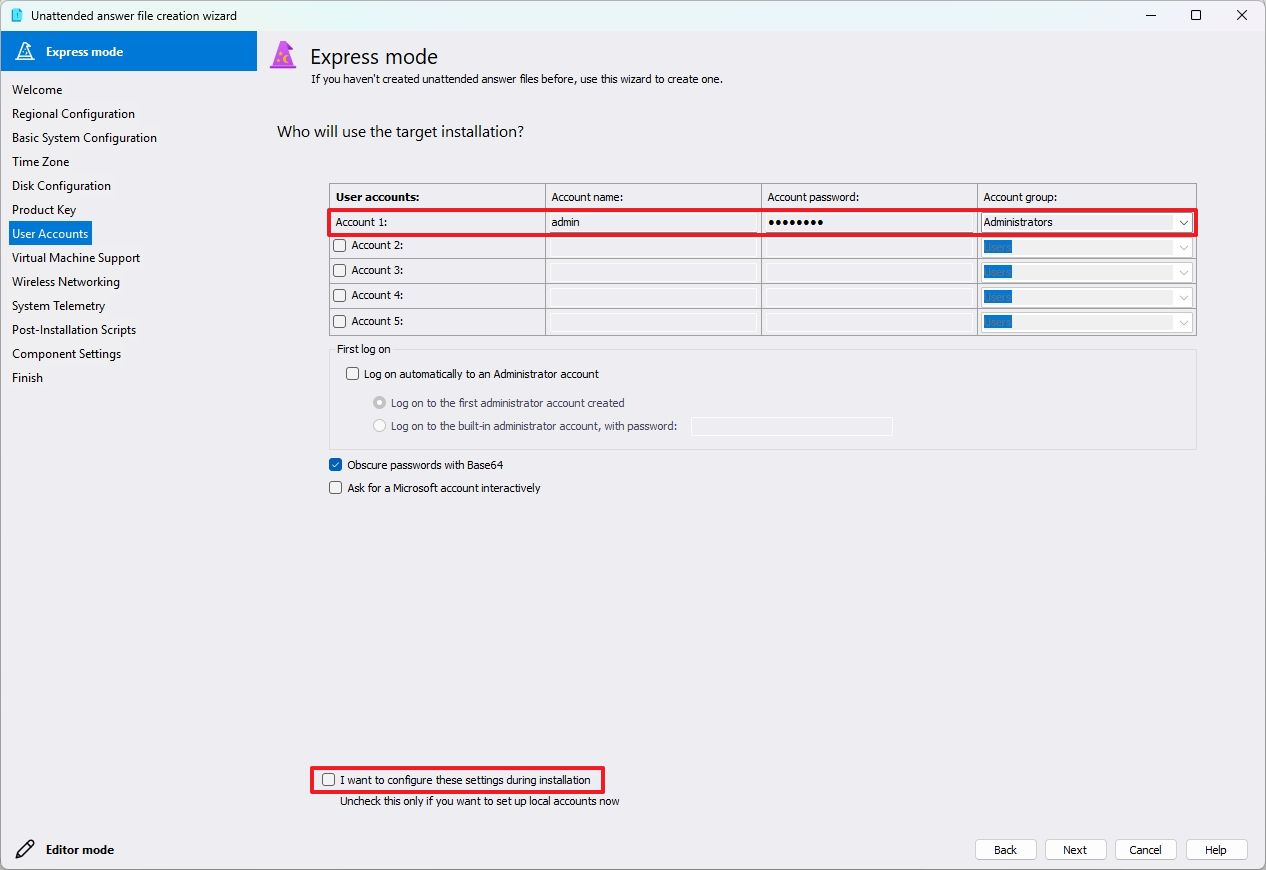
- Quick tip: You can always check the “Ask for a Microsoft account interactively” option to configure a Microsoft account during setup. However, to make the experience totally automated, it’s best to create a local account and then link it to a Microsoft account after the installation.
- Choose the Administrators option from the “Account group” setting.
- Click the Next button.
- Select the “Passwords should never expire” option.
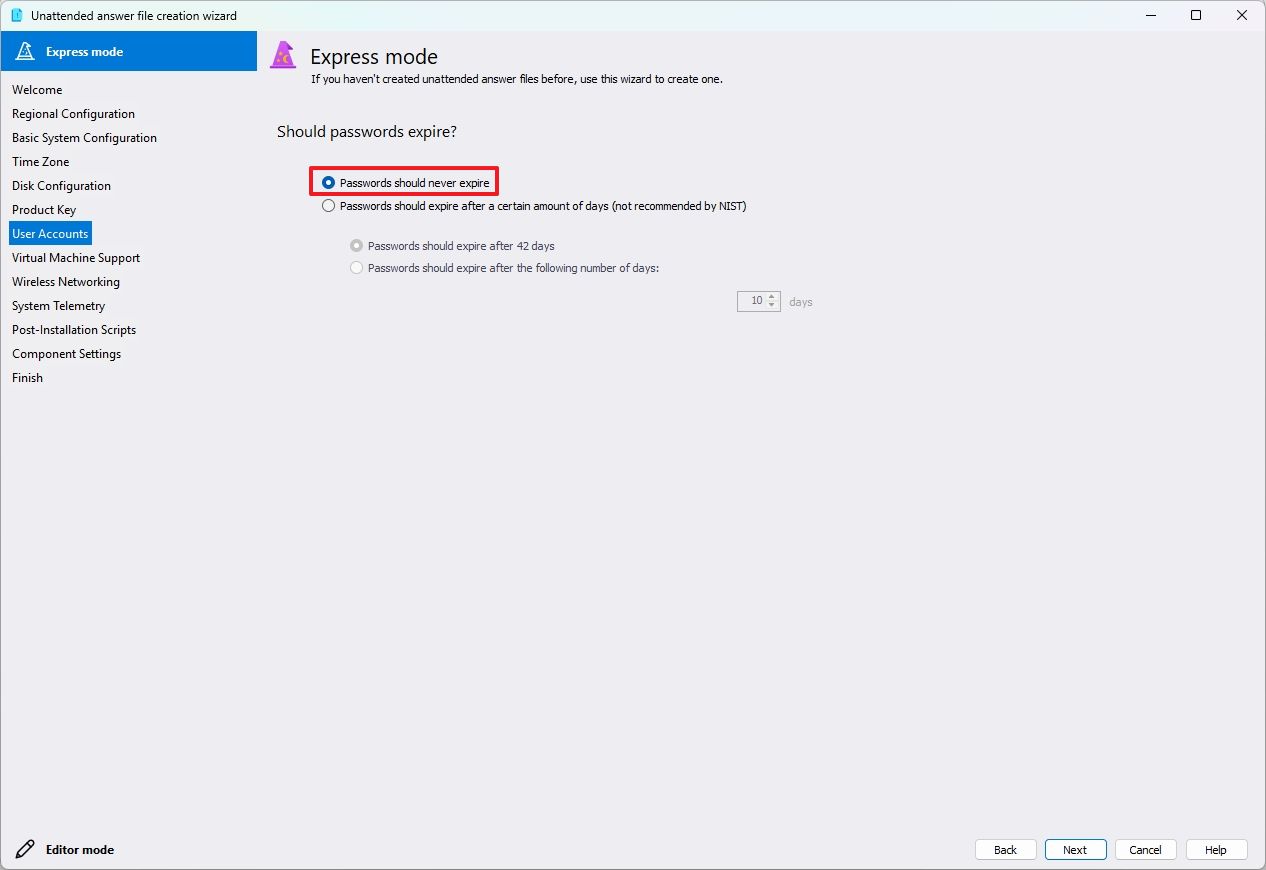
- Click the Next button.
- Check the Disable policy option.
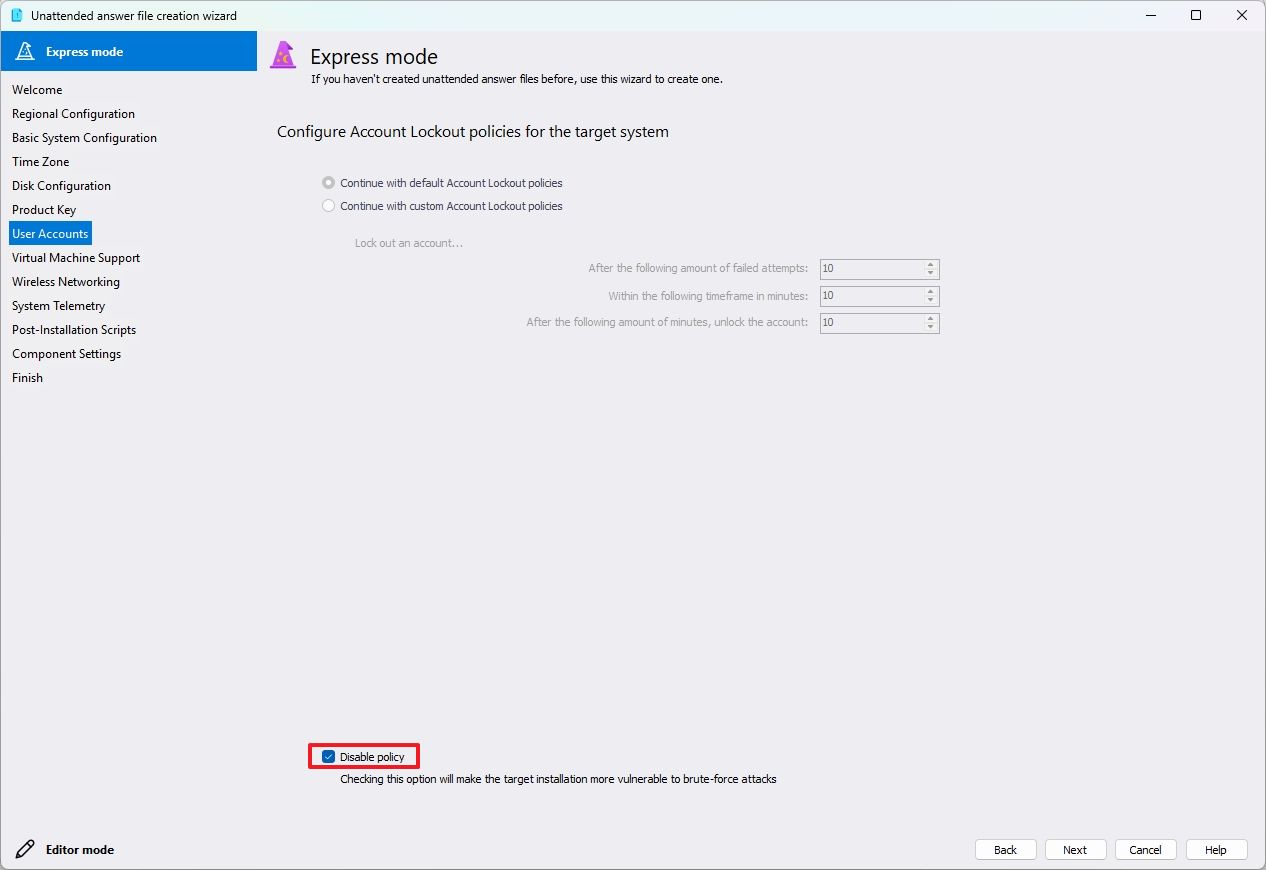
- Click the Next button.
- Select the “No, I plan on using the target installation on a real system” option.
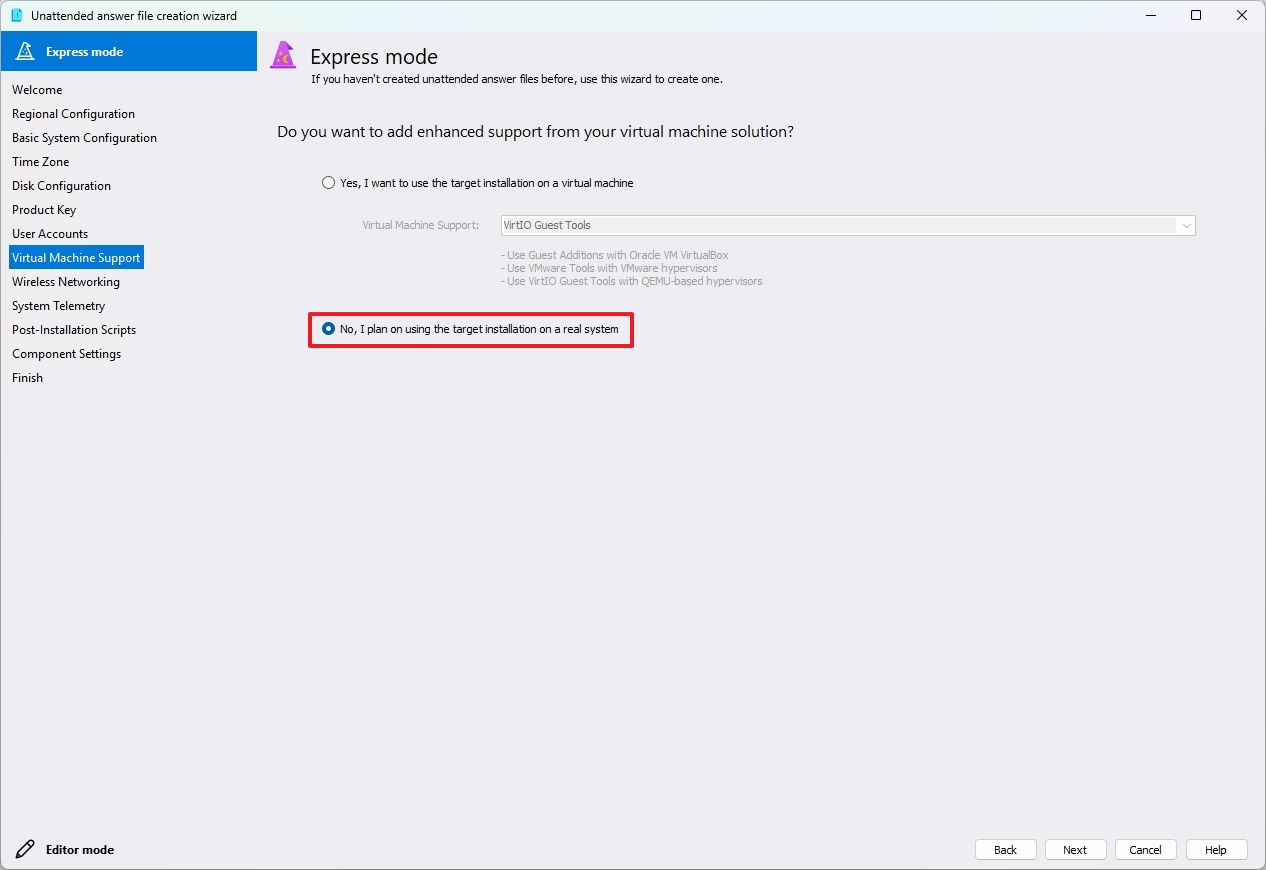
- Quick note: If you choose the Yes option, you can select the option to support VMware, VirtualBox, etc.
- Click the Next button.
- Clear the “I want to configure the settings installation” option.
- (Option 1) Select the “Configure settings for wireless network now” option.
- Confirm the wireless network settings, including SSID and password.
- (Option 2) Select the “Skip configuration” option if the device will connect using the Ethernet connection.
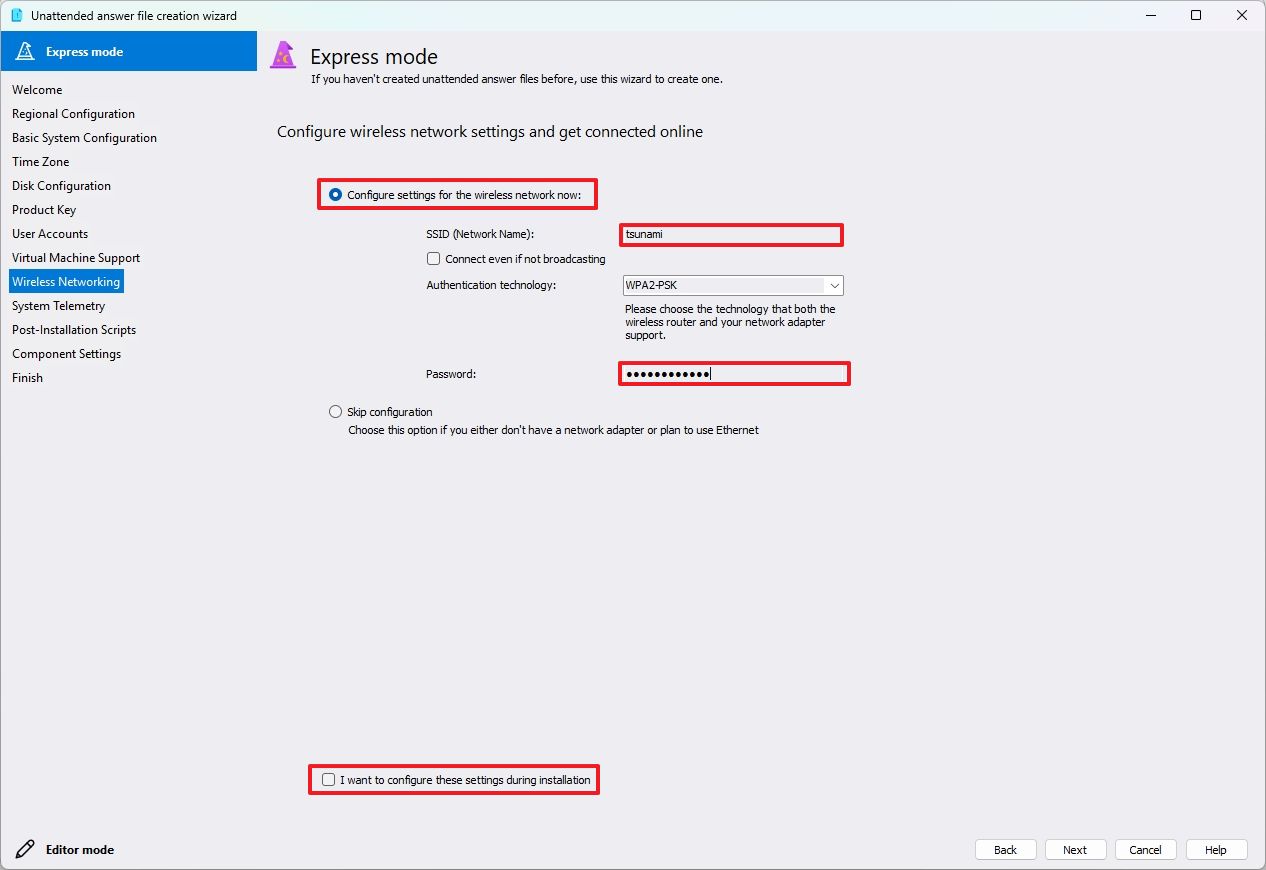
- Click the Next button.
- Clear the “I want to configure the settings installation” option.
- Select the Disable telemetry option.
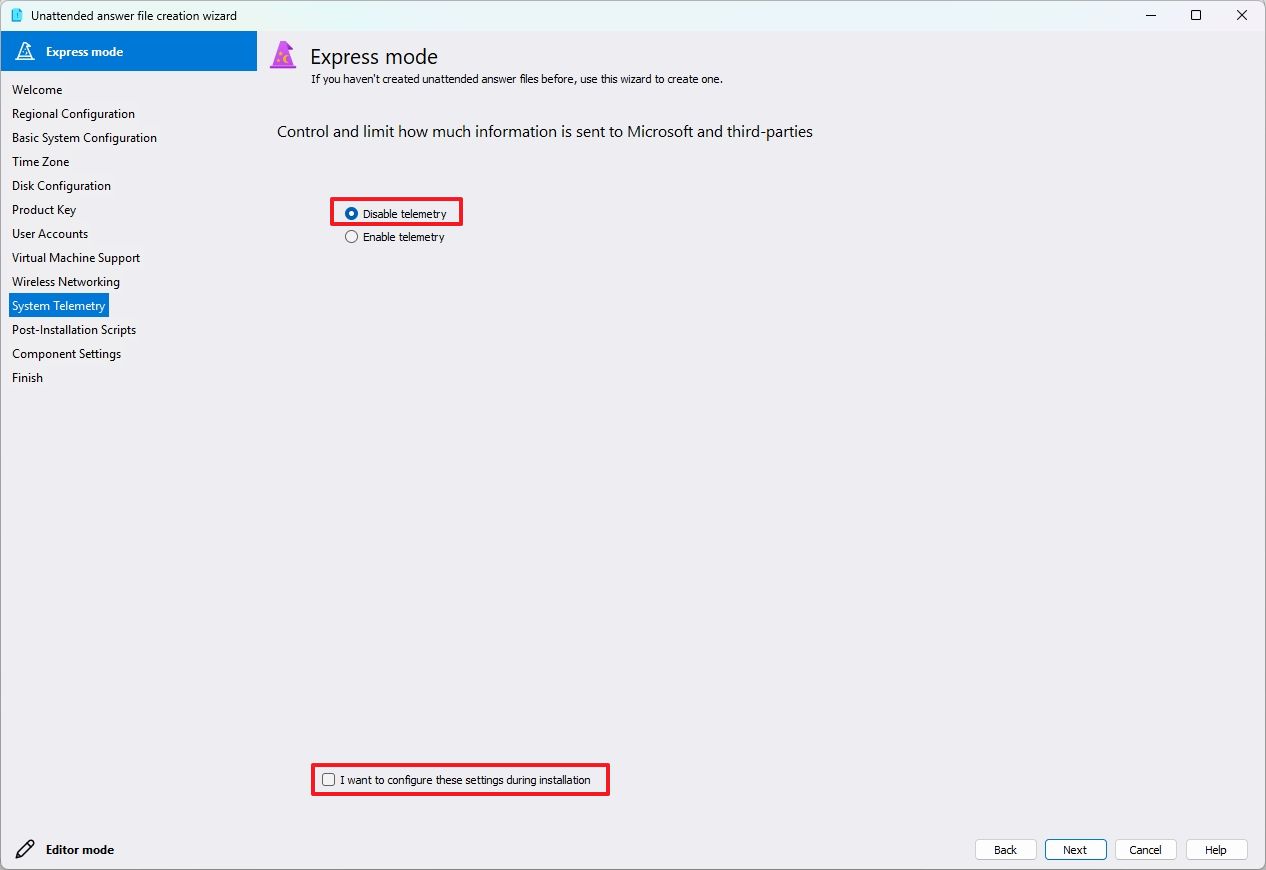
- Click the Next button.
- Click the Next button again to skip the script configuration.
- Click the Next button one more time to skip the configuration of additional components.
- Click the Next button one last time.
- Save the unattended file on your computer as autounattend.xml.
- Click the Close button.
Once you finish the procedures, you’ll arrive at a solution you need to incorporate into the installation package for Windows 11, so you can carry out an unattended system configuration.
Integrate file to Windows 11
To integrate the answer to Windows 11 installation media, use these steps:
- Open the Windows 11 download page.
- Click the “Download now” button to save the file on the device under the “Create Windows 11 Installation Media” section.
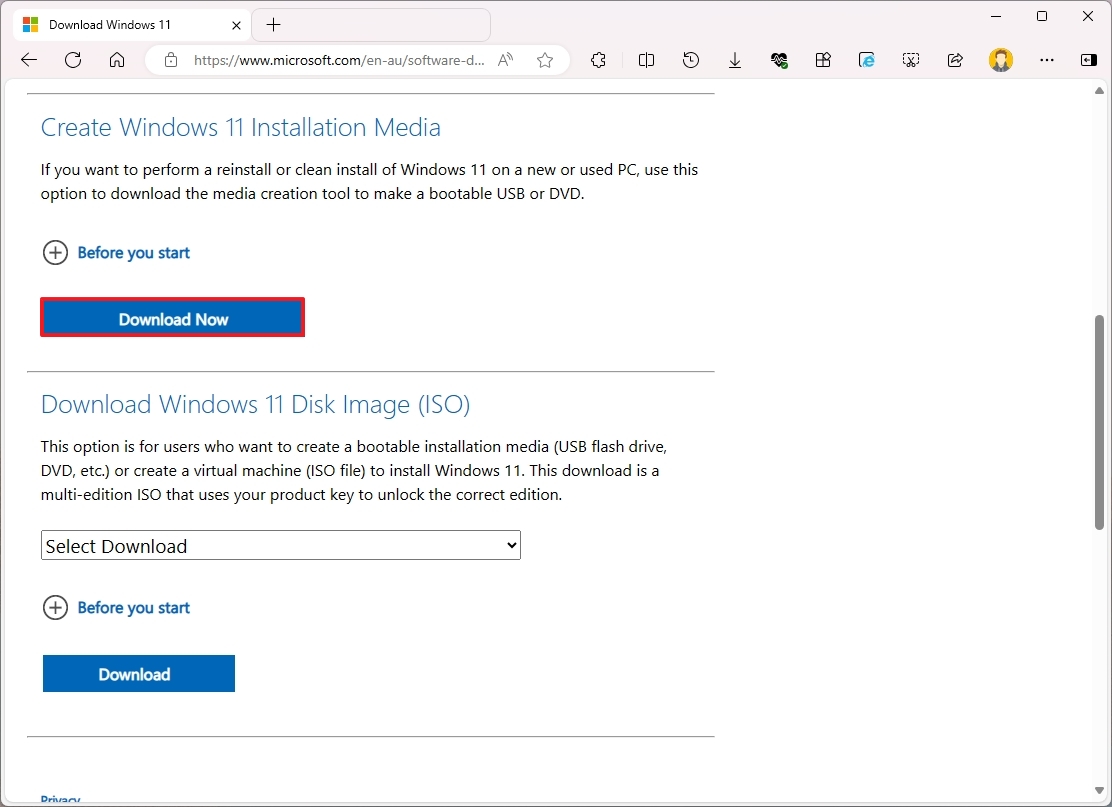
- Double-click the MediaCreationTool.exe file to launch the tool.
- Click the Accept button to agree to the terms.
- (Optional) Clear the “Use the recommended options for this PC” option.
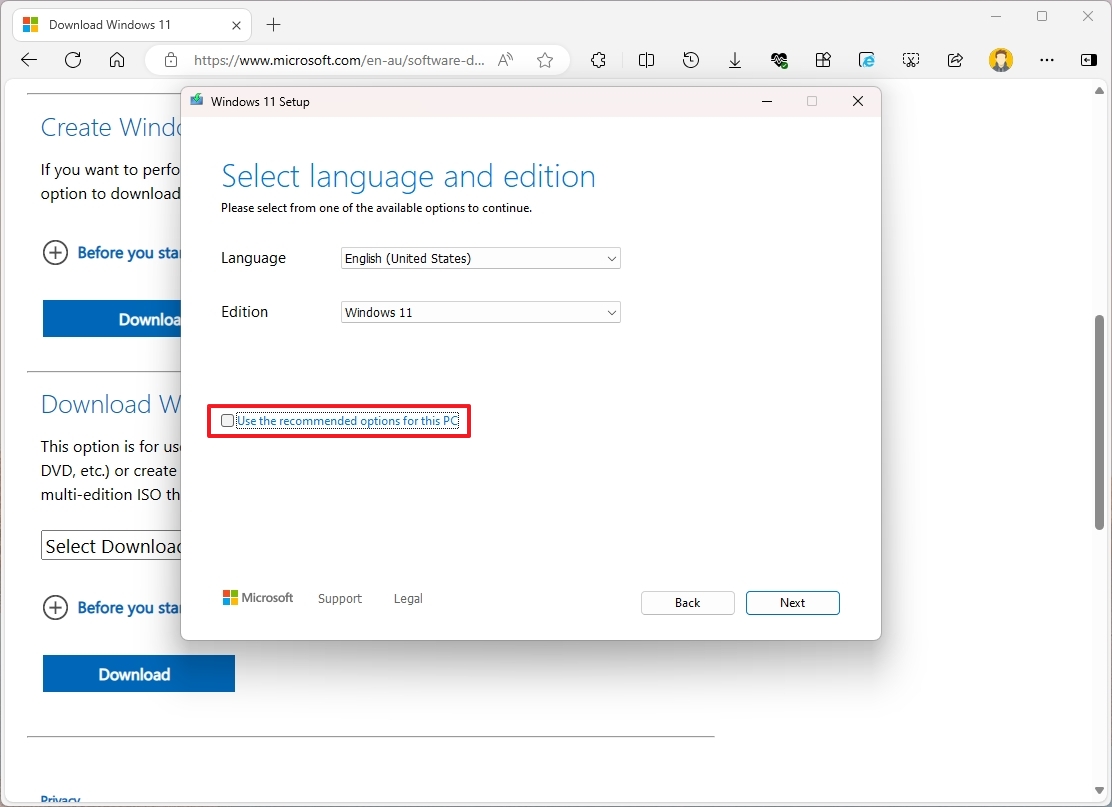
- Select the correct language and edition of Windows 11.
- Click the Next button.
- Select the “USB flash drive” option.
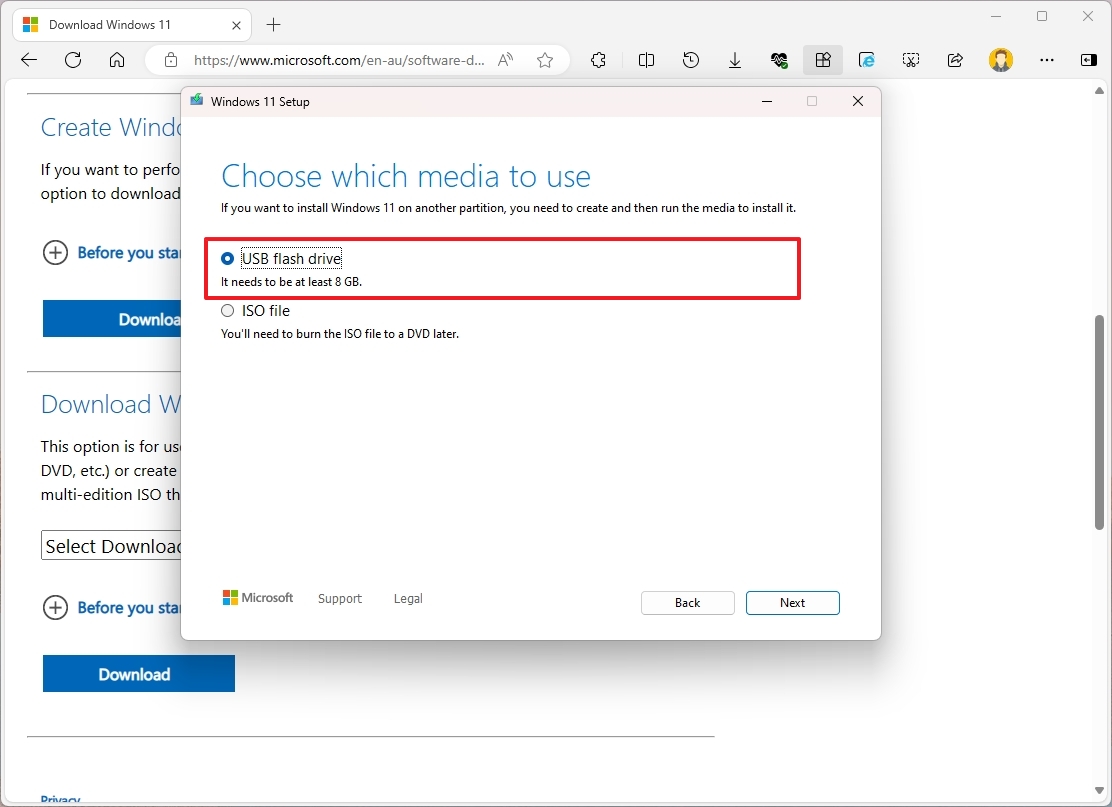
- Click the Next button.
- Select the removable storage from the list.
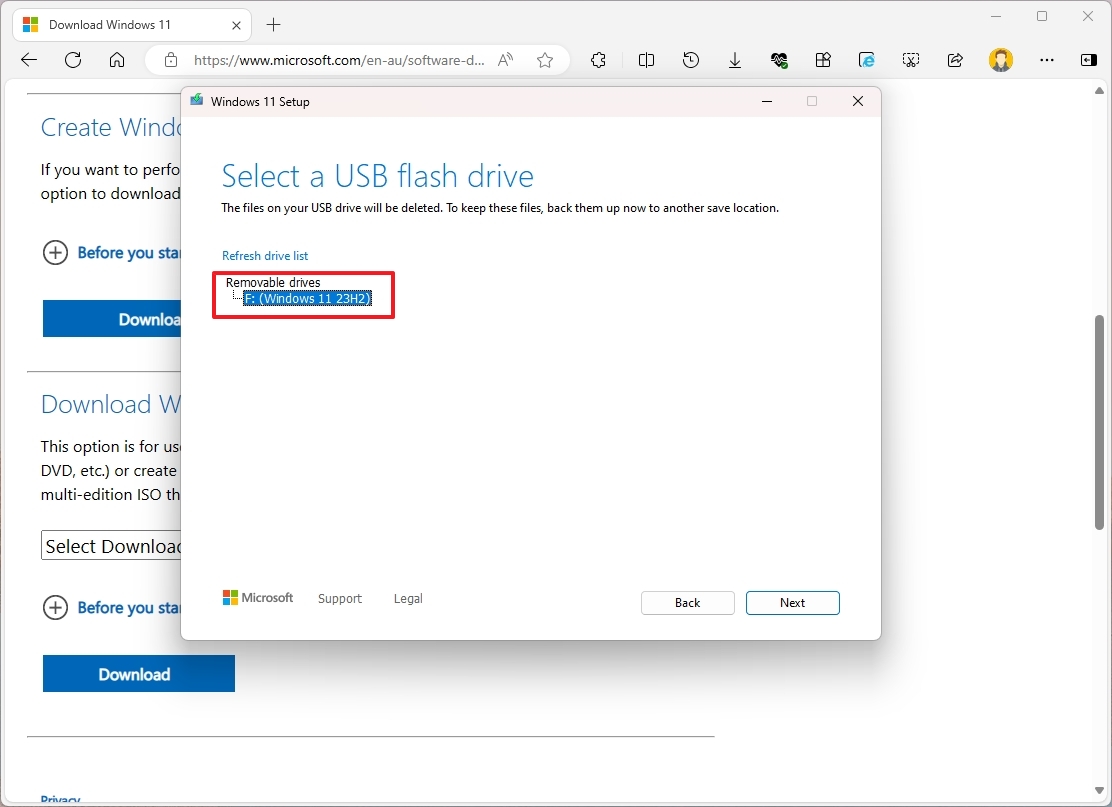
- Quick tip: If the device is not on the list, click the “Refresh drive list” option to make it available.
- Click the Next button.
- Click the Finish button.
- Open File Explorer.
- Open the autounattend.xml file location.
- Right-click the file and select the Copy option.
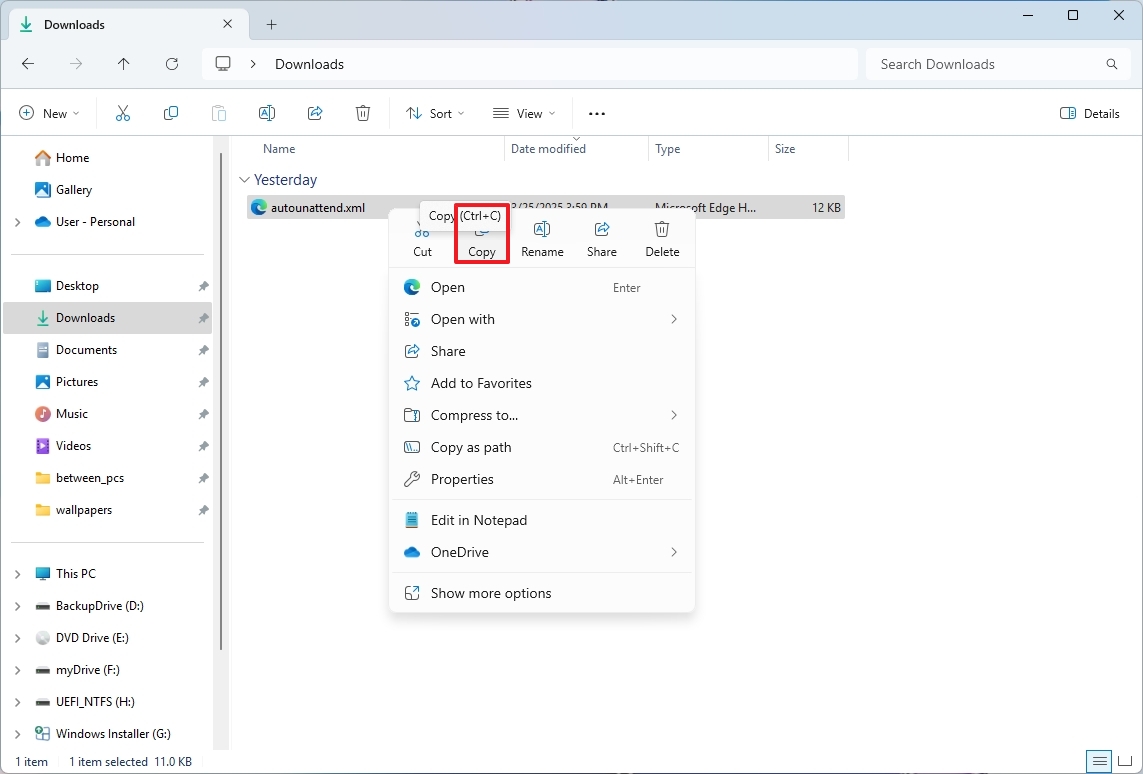
- Open the Windows 11 USB location from File Explorer.
- Right-click the Paste to copy the autounattend.xml to the installation media.
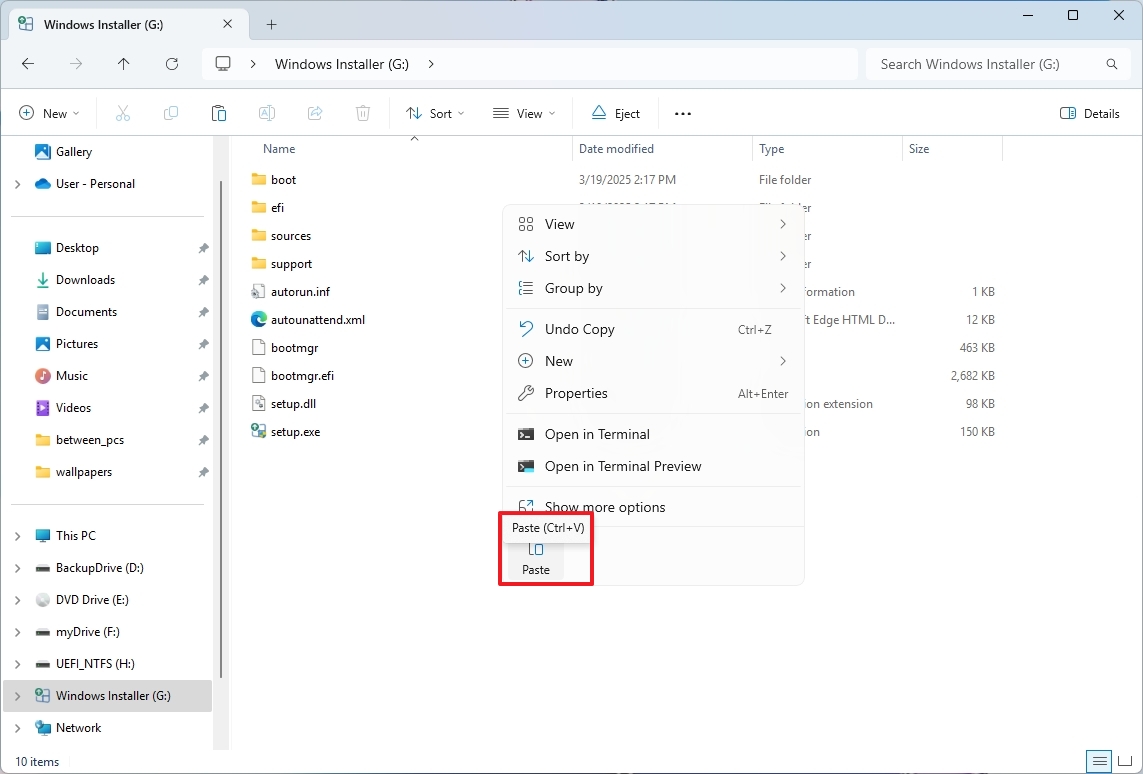
After finishing the given instructions, you are now ready to employ the USB as a bootable tool for executing an automatic installation of the operating system.
It’s worth mentioning that you might find two possible names for an XML file: one is “autounattend.xml,” and another is simply “unattend.xml.
Typically, the answer file used during Windows 11 installation from a USB flash drive resides in the root directory and is named “‘unattend.xml’“.
From my perspective as a tech enthusiast, I often find myself working with the “unattend.xml” file. This magical tool is what we use to automate deployments, making our lives easier. Typically, you’ll find it neatly tucked away in the “C:\Windows\Panther\Unattend” folder.
More resources
Read More
- Gold Rate Forecast
- SteelSeries reveals new Arctis Nova 3 Wireless headset series for Xbox, PlayStation, Nintendo Switch, and PC
- Masters Toronto 2025: Everything You Need to Know
- Eddie Murphy Reveals the Role That Defines His Hollywood Career
- We Loved Both of These Classic Sci-Fi Films (But They’re Pretty Much the Same Movie)
- Rick and Morty Season 8: Release Date SHOCK!
- Discover the New Psion Subclasses in D&D’s Latest Unearthed Arcana!
- Mission: Impossible 8 Reveals Shocking Truth But Leaves Fans with Unanswered Questions!
- PI PREDICTION. PI cryptocurrency
- ‘The budget card to beat right now’ — Radeon RX 9060 XT reviews are in, and it looks like a win for AMD
2025-03-27 17:11